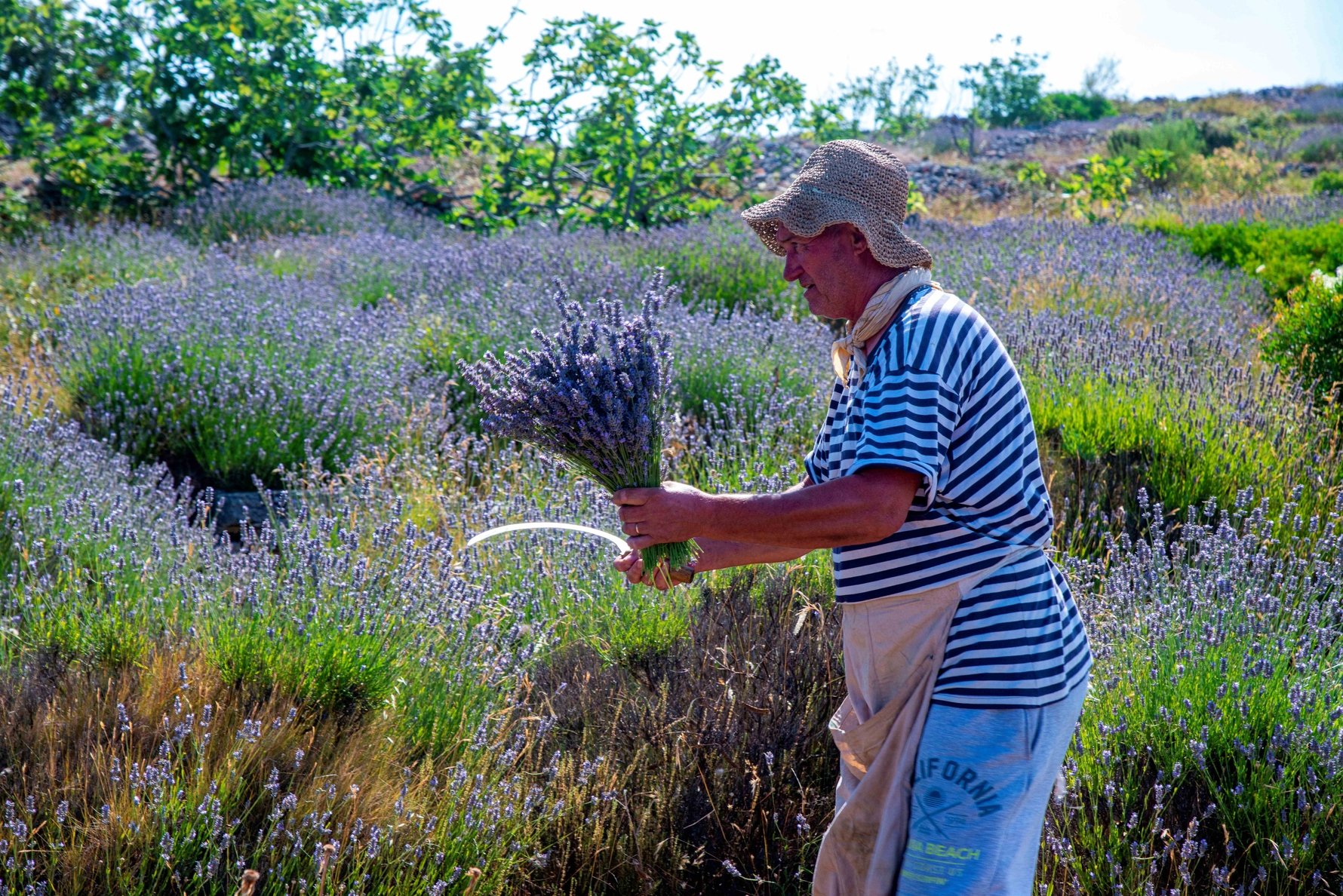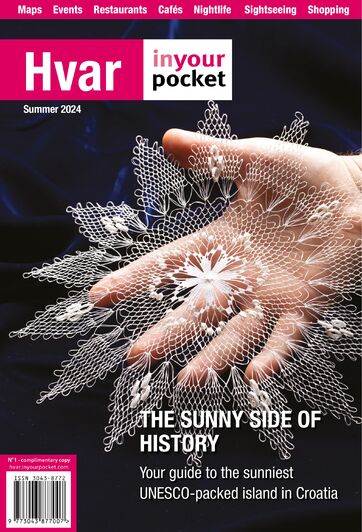Hvar Town's municipal boundaries extend a long way beyond the town itself, taking in a sizeable chunk of the island's western end. It's a rugged landscape of rock and scrub, with occasional patches of olives, orchard fruits and lavender intruding upon the wilderness.
Brusje
Six kilometres north of Hvar Town, Brusje is a hilltop village of traditional houses and modern villas, offering splendid views down towards the north coast of the island. A traditional centre of lavender and rosemary production, the village is enveloped by herbal fragrances whenever the wind gets up. Narrow winding roads descend towards two of the island's best-kept secrets, the tranquil shingle Bruške vale, and the much more dramatic Stiniva Bay, a narrow cove bordered by green slopes.
Malo Grablje
An uninhabited village of handsome stone houses squeezed between rocky hillsides, Malo Grablje exudes a uniquely wistful atmosphere. The ancient ambience is sometimes used as a venue for the Hvar Summer Festival. You can walk there uphill from Milna, or downhill from Velo Grablje.Velo Grablje
Another village that has suffered from serious depopulation during the 20th century but retains a handful of inhabitants an a growing number of summer residents is Velo Grablje, a sizeable village that spreads itself, amphitheatre-like, across a curving hillside high above Hvar to the northeast. Its accessible from the old Hvar-Stari Grad road (not the new one that burrows through the centre of the island in a tunnel). Near the turn-off is a strange funnel-shaped dry-stone construction known as the Vapnenica (Japjenica in local dialect), a former limestone kiln that stands as evocative witness to a time when inland Hvar was a much more productive, industrious place than it is nowadays.Velo Grablje itself is a fascinating place for a wander, an erstwhile urban centre complete with main square, church and former school-house that nowadays looks like the set for a wistful movie about the Mediterranean past. There are stunning views down the valley towards the island's south coast, with the Pakleni islands in the distance. Velo Grablje was an important centre of the herb-oil industry, something that enthusiasts have worked hard to revive in recent years. Lavender is still grown on the surrounding slopes, and a lavender festival - with a crowd of stalls set out on the main square - is held here every July.

Milna
Three kilometres east of Hvar, just below the main coastal road, Milna is a shore-line settlement mostly made up of modern houses and apartments. It's a popular day-trip destination due to a brace of excellent beaches. The main beach in the centre of the village offers a mixture of pebble and rock; while Mala Milna, a short walk over the headland to the west (past the Mala Milna campsite), is a much more intimate cove of smooth pebbles and shallow clear water. There are plenty of taverns and cafés in Milna should you want to make a day of it.Sveta Nedjelja
Sveta Nedjelja (also spelt Sveta Nedilja) is in many ways the opposite of Hvar Town, a village-sized community with no big hotels, loads of intimate family accommodation, minimal nighttime noise and bags of beach-side potential. Helping to retain its semi-discovered status is its relative geographic isolation. Although located only 12km east of Hvar Town as the crow flies, there is no direct route: only a gravel road that runs above coastal cliffs and has no crash barriers on the sea-facing side. (Suitable for exhilarating mountain-bike rides, perhaps, but not for holidaying drivers.) Getting to Sveta Nedjelja afely involves a roundabout route: you have to drive to Jelsa, turn inland to the village of Pitve, and then go through a rough-hewn road tunnel drilled decades ago by the Yugoslav army. A single-lane tunnel controlled by traffic lights, it's a startling experience in its own right.Once you get there, Sveta Nedjelja is spread across a steep hillside more or less directly beneath the island's highest point, the 626-metre-high Sveti Nikola. The upper part of the village is the oldest part, with a huddle of stone houses swathed by vineyards. The lower, shoreline part mostly comprises modern houses built over the last few decades.
Located beneath the vineyards that produce some of the island's best Plavac mali grapes, Sveta Nedjelja is home to the Zlatan otok winery, and many local families make their own. With only two café-restaurants in the village, one of which sits beside a small yachting marina, Sveta Nedjelja provides just the right level of comfort but without the hubbub.
Sveta Nedjelja's beaches are nothing if not varied: there's a sequence of rocky sunbathing slabs along the coastal path; to the west, a small bridge to the former steamship dock at Veli Kamik is a popular place for jumping an diving; to the east, a path descends to the cute shingle beach of Zagon, whose shallow waters are popular with families. Non-beach activities include climbing the paths that lead up the hillside above the old village, passing a cave once inhabited by monks and still home to a tiny chapel used occasionally for services. Trails continue up onto the mountain ridge above, which offers fantastic views of the coast, with the islands of Šćedro and Korčula spread out beyond.


